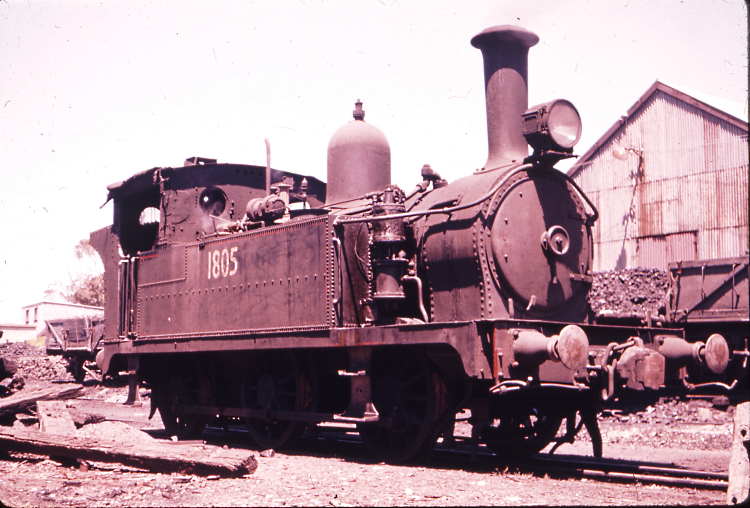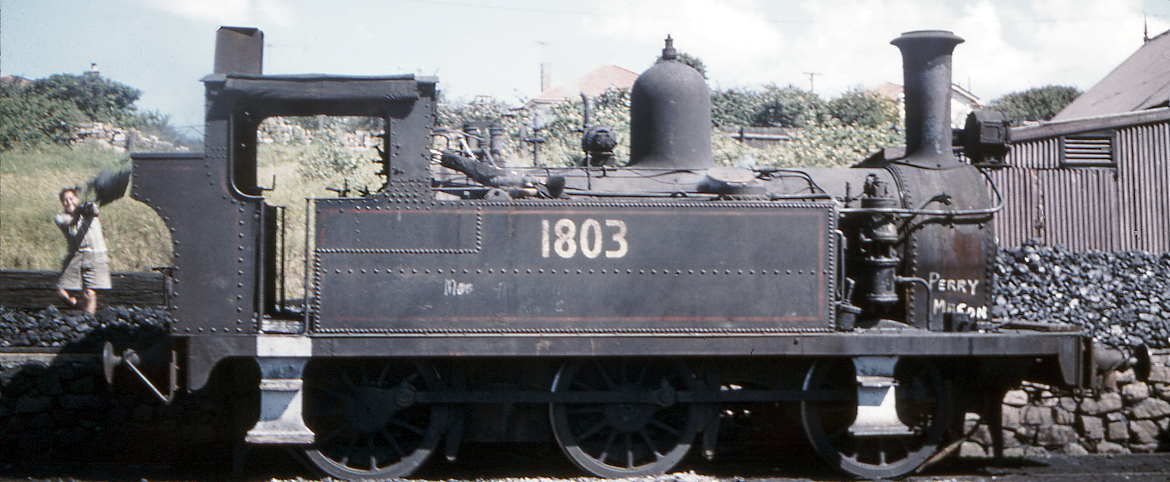NSWGR 18 Class 0-6-0T
These days it’s hard to believe that any railway would buy a loco like the NSWGR 18 Class for fast suburban passenger work but that’s exactly what the six locos in this class were purchased for.
In the early 1880’s the then Sydney suburban network was struggling with increased loads and ageing locomotives and keeping to the timetable was becoming a challenge. The proposed 18 Class were designed to alleviate that problem.
Mr Scott, the acting Locomotive Inspector, drew up specifications for an 0-6-0T loco with 5′ driving wheels and a domed boiler.
Approval for the design was given and the Vulcan Foundry of Newton-le-Willows in England won the contract. Mr Scott was sent to England to meet with the builders and, while he was at sea, the specifications were changed.
Not fit for purpose
The new specifications called for an 0-6-0T loco with 4′ driving wheels and a domeless boiler. It was claimed that the new specifications would result in a loco capable of a top speed of 53kph.
The six locos were built and delivered in 1884 and it wasn’t long before it became apparent that the 4′ driving wheels were never going to deliver anything like 53kph and they were soon relegated to other duties.
Shunting at Sydney Yard soon became their major occupation.
In 1907 domed boilers were finally fitted to all members of the class and in 1922 they were the first locos in the state to be fitted with power reversing gear.
Whether it was too much for a small loco, or for some other reason, the power reversing gear was soon removed from all 6 locos and replaced with a reversing lever.
In 1927 they were all transferred to depot working and some were renumbered in the (X) 10 series when they were fitted with cranes.
When the cranes were subsequently removed those locos were renumbered back to their old numbers … with the exception of one loco.
1804 had been renumbered as 1076 and it retained that number even after its crane had been removed

The final years
The class ultimately moved to Port Kembla where they were used to shunt the Port Kembla Commercial network.
In November 1957 1801 and 1806 were officially condemned and withdrawn before being sold to the Wallarah Colliery.
1802 was sold to the Public Works Department in 1927(?)
1805 was scrapped in March 1963
1803 and 1076 were preserved at the NSW Rail Transport Museum
More information
1801 carried builders’ number 992 and entered service on April 1, 1884 as No. 285 of the 285/R285 class.
In the general reclassification and numbering of 1924 it became 1801 and in 1927 it was reclassified and renumbered as 1075. It subsequently returned to 1801 and carried that number through to its withdrawal.
1802 carried builder’s number 993 and entered service on April 7, 1884 as No. 286/R285. It became 1802 in the 1924 reclassification. Its X10 number is unknown.
1803 carried builder’s number 994 and it entered service on May 12, 1884 as No. 287/R285. In the 1924 reclassification it became 1803. It’s X10 number was 1077.
1804 carried builder’s number 995 and it entered service on May 9, 1884 as No. 288/R285.
In the 1924 reclassification it became 1804. It carried it’s X10 – 1076 right through till it was withdrawn.
1805 carried builder’s number 996 and it entered service on May 28, 1884 as 289. In the 1924 reclassification it became 1805. It’s X10 number is not known.
1806 carried builder’s number 997 and it entered service on May 31, 1884 as 290.
In the 1924 reclassification it became 1803. It’s X10 number is not known.
Technical Details
| As Built | Re-boilered | |
|---|---|---|
| Cylinder diameter | 15 inches | 15 inches |
| Boiler pressure | 140 psi | 140 psi |
| Tractive effort | 11550 lbs | 11550 lbs |
| Weight | 31 tons 19 cwt | 37 tons 3 cwt |
| Coal capacity | 1 ton | 1 ton |
| Water capacity | 850 gallons | 850 gallons |
Bibliography
Oberg, Leon. Locomotives of Australia 1850s ~ 1900s, Third Edition, 1996. Kangaroo Press, Australia. Colorcraft Ltd, Hong Kong.
Unless otherwise indicated photographs on this web page are by Weston Langford.
They are licensed under a Creative Commons Attribution-NoDerivatives 4.0 International License.
Photos marked ** Photo courtesy of Mitchell Library, State Library of New South Wales
